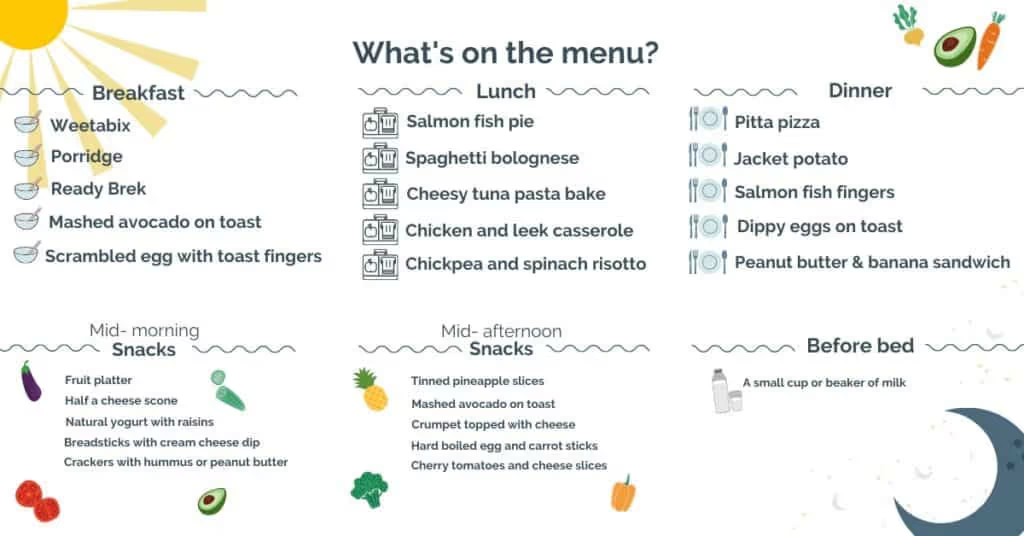Fennies are proud to be accredited by the Early Years Nutrition Partnership (EYNP) for our menus and contribution to supporting good nutrition in the early years. As part of our subscription, we are delighted to bring you regular nutrition updates and evidence-based articles written by our Registered Nutrition Professionals from EYNP, Janet Aylott and Catherine Lippe.
Children of all ages can benefit from a regular and consistent routine. It helps to create familiarity and can enable your child to understand and anticipate what comes next in their day.
When it comes to meals and snack it is helpful for young children to have frequent opportunities to eat across the day. Children have small tummies but because they are growing rapidly in the early years, their energy and nutrient requirements are high. The best way to support your child in meeting their energy and nutrients needs is to offer small portions of food frequently throughout the day.
For children aged 1-5 years, it is recommended to offer 3 main meals; breakfast, lunch and tea, with 2 or 3 healthy snacks in between. An example of what this routine might look like is included below.

Tips for supporting your child’s feeding routine:
Be consistent
Aim to offer meals and snacks at roughly the same time each day. Consistency with the timings of meals and snacks, as much as reasonably possible, can help your child to understand and anticipate what comes next in their day.
Try using flashcards
Create a picture story of your daily routine using flashcards or pictures. This will help your child to understand where they are in their daily routine, what is happening next and when to expect the next snack or meal. For example, “let’s look, we have just had breakfast and brushed our teeth. Now it’s time to play and then we will have a snack. What game shall we play?”
Avoid grazing
Offering too many snacks or milk drinks throughout the day may spoil your child’s appetite for food as the day goes on. If your child is constantly asking for snacks remind them that it isn’t snack time yet. Try to engage them in an activity or game until it is time for their snack. You could use a flashcard routine, as mentioned above, to help.

Adapt your routine
There will be times when it might not be possible to stick to the usual routine. If the meal or snack time is going to change try to let your child know ahead of time. For example, if you are eating out or visiting friends or family let your child know in advance of the change. You could take toys, crayons or a light snack such as vegetable sticks or crackers with you to avoid your child becoming over-hungry if they have to wait longer than usual for the food.
Let your child decide
Remember that your child’s appetite will vary from day to day and meal to meal. Try to allow your child to be in charge of their own appetite. Your role is to offer foods at the appropriate meal and snack times throughout the day and your child’s role is to decide how much to eat. If they don’t eat much at a meal or snack time, don’t worry, reassure yourself that they have another opportunity to eat coming up soon.

FAQ
Subscribe to our newsletter
Stay up to date with Fennies news






.png)



